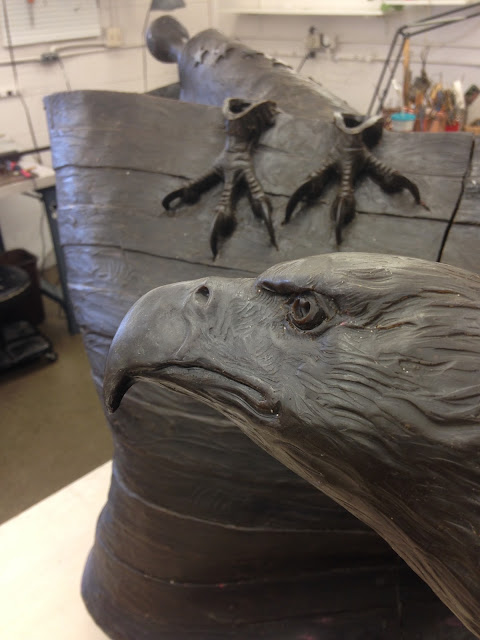 |
| 11.5 inches height X 8.5 inches wide, low relief study of a male nude (Sistine Chapel ceiling) after Michelangelo |
With all of the recent attention on outdoor monuments I have somewhat mixed feelings about the removal of confederate statues. On the one hand, yeah they represent slavery and since the South lost the war slavery has been illegal. And if we can model ourselves after Germany there aren't any statues of Hitler in Berlin so it would make sense to remove them. Right? At the same time, the statues have been around for over 100 years with little to no attention given to them, or at least not compared with the attention they are getting in the last few months. The next thing we know Mt. Rushmore will be vandalized or threatened in some way. So why should we remove them now?
I feel as though by removing these statues (in todays political divide) it is like pouring gasoline on a fire. Both sides are so upset at each other that the removal of these statues, at this particular time of political unrest and protests, it is probably not the smartest thing to do. People are fighting hate with hate and we should know by now that hate never solves anything. I believe in tolerance and trying to understand both sides of an argument. In my mind, the way I see things playing out by removing the statues now (that maybe should have been removed a long time ago and a little more inconspicuously, if removed at all) is there will be more backlash and violence. But who really knows.
On the other side of things, is the fact that I make my living as a sculptor. I can appreciate the techniques employed in creating some of these monuments while looking beyond the meaning. When I go to Europe to admire a Michelangelo or Bernini, I don't get too caught up in the subject matter of the statue, but rather the techniques. After all, Michelangelo and Bernini are more known for their understanding of human anatomy, drapery, composition, etc. then they are for the statues they represent. When we study and draw from their sculptures, less emphasis is placed on who or what the subject is and more on how the drapery flows over the arm, etc. At least that is how it is for me. They were commissioned artists after all and who or what they sculpted would have been different had they lived in a different time. They wouldn't have received these wonderful commissions if it weren't for this beautiful understanding (granted they did live in the Renaissance and the Baroque, respectively, so great commissions were available). It's fair to say, though, that the quality of their works are more significant than the subject matter of the sculptures (there are other statues of "David" created by other known sculptors but it's Michelangelo's David that is supreme so we should study and appreciate his David, not so much on the subject matter, but on the quality of the carving, anatomical beauty, composition, etc). In my opinion the subject matter, in this instance, takes a back seat. Michelangelos David was commissioned to be the protector of Florence, ready to fight the enemies which has been long forgotten. So from the point of view that some of these Confederate sculptures are beautifully composed with strong understanding of human anatomy, they should still be standing. Whether standing in a museum or in their originally designed location is the question. If we could fast forward 1,000 years from now, I would think most people living in that time would be more than happy to see these statues.
Yesterday, I was inspired to create a relief study of one of my favorite drawings done by Michelangelo as I wonder how long some of the artwork we admire will be around. The drawing that he did was one of his many nude studies (called "Ignudi") designed for the Sistine Chapel ceiling. When I first saw the Sistine Chapel in person in 1998 I had a deep spiritual connection to it. I had studied it through books and drew from it many times, studying Michelangelo's unique understanding of human anatomy and twists and turns of the torso. I will never forget sitting under this masterpiece of art and seeing first hand this beautiful composition. Whether the artwork created unrest during Michelangelo's time or not it is still worth studying and appreciating today. At least that is my opinion.



































